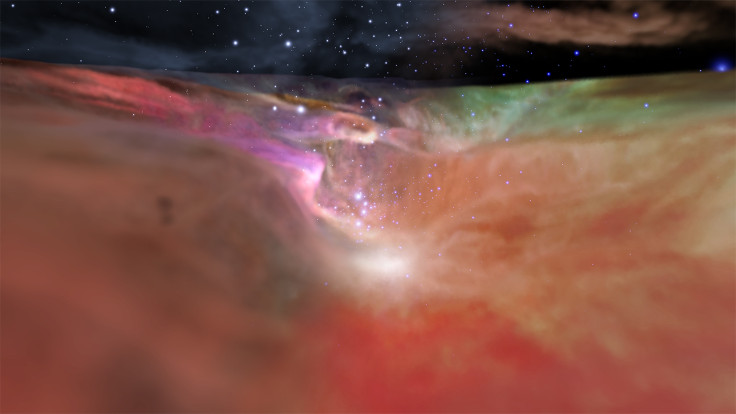Space gets spookier with Halloween style jack-o-lantern Nebula, thanks to NASA image
NASA releases another spooky image of space just in time for Halloween.
NASA is enjoying Halloween in full swing. Apart from spooky exoplanets' "Galaxy of Horrors" trailer and creepy Hubble image, the aeronautics and space agency in the United States shared an astonishing image of the Great Nebula in the constellation of Orion.
The space agency released a GIF of the image taken by Spitzer Space Telescope on Wednesday, resembling carved pumpkin Jack-o-lantern. The GIF creates an outline of the pumpkin for the viewers' reference.
The Great Pumpkin... in SPACE!@NASASpitzer spied a carved-out cloud of gas and dust that looks like a celestial jack-o'-lantern: https://t.co/Dl4nDmmUB9 pic.twitter.com/kA1GSZEwhY
— NASA JPL (@NASAJPL) October 30, 2019
According to NASA's official website, the Orion Nebula, also referred to as Messier 42 or NGC 1976, got its spooky shape from the massive star that is probably 15 to 20 times heavier than the sun.
"A recent study of the region suggests that the powerful outflow of radiation and particles from the star likely swept the surrounding dust and gas outward, creating deep gouges in this cloud, which is known as a nebula," reads the NASA report.
The Orion Nebula is situated in Milky Way and it is one of the brightest nebulae that are visible to the naked eye in the night sky. The celestial body is said to be situated 1,500 light-years away from Earth and it was discovered in 1610 by the French scholar Nicolas-Claude Fabri de Peiresc. The closest large star-forming region to Earth has been known to many cultures throughout human history.
Since its discovery, it has been a subject of intense curiosity and study. It is one of the most photographed celestial bodies of the night sky.
Spitzer that can sense infrared light detected the star illuminating at the centre, "glowing like a candle" in the hollowed-out-pumpkin rendering it a fitting nickname the "Jack-o'-Lantern Nebula". The different colours seen in the image showcases three different wavelengths of infrared light giving it a multicolour appearance. Even though it is hard for the human eye to see these wavelengths separately, the picture captures it perfectly.

Green and red lights are primarily the results of dust radiating in different temperatures in the atmosphere. Together, these colours create a yellow hue. Meanwhile, blue light represents some very hot regions of the nebula. As for white, it is the star.
When this image is processed for a high-contrast version it gets the orange hue, perfect for the Halloween pumpkin.
Happy Halloween, NASA!
© Copyright IBTimes 2025. All rights reserved.




















